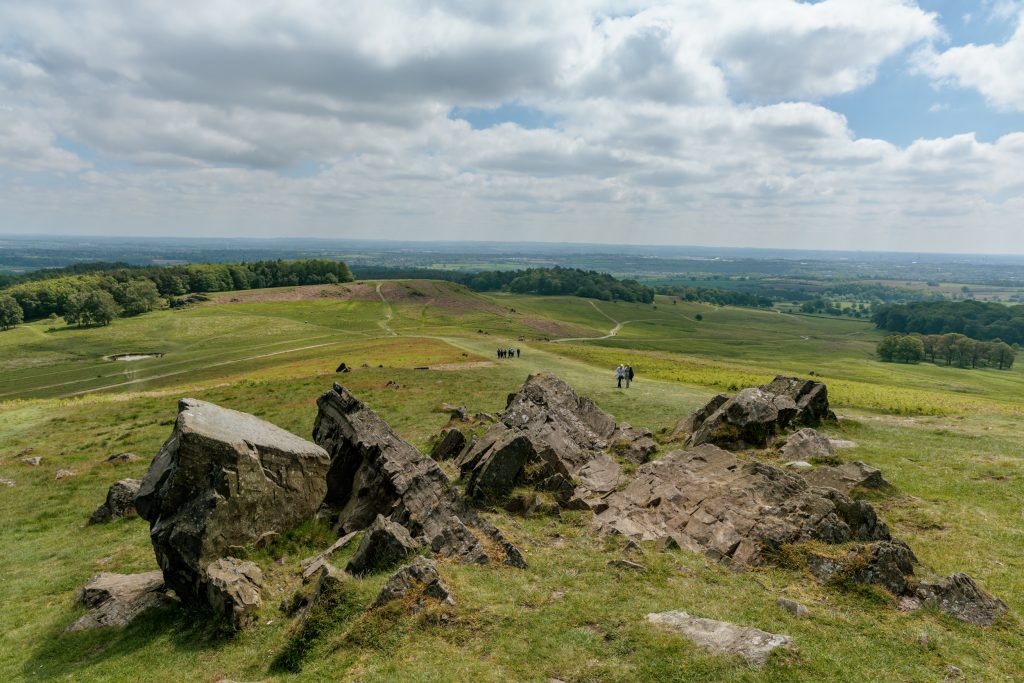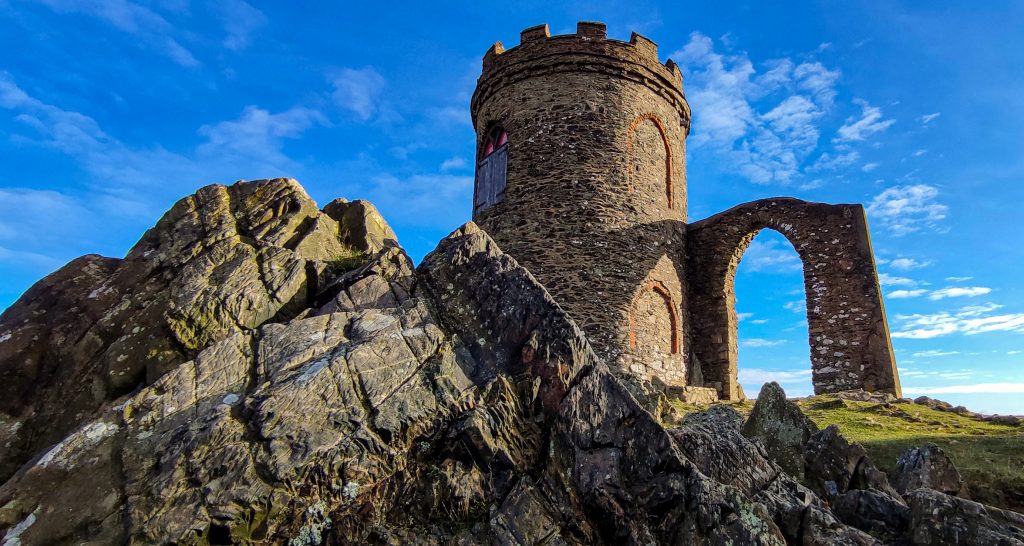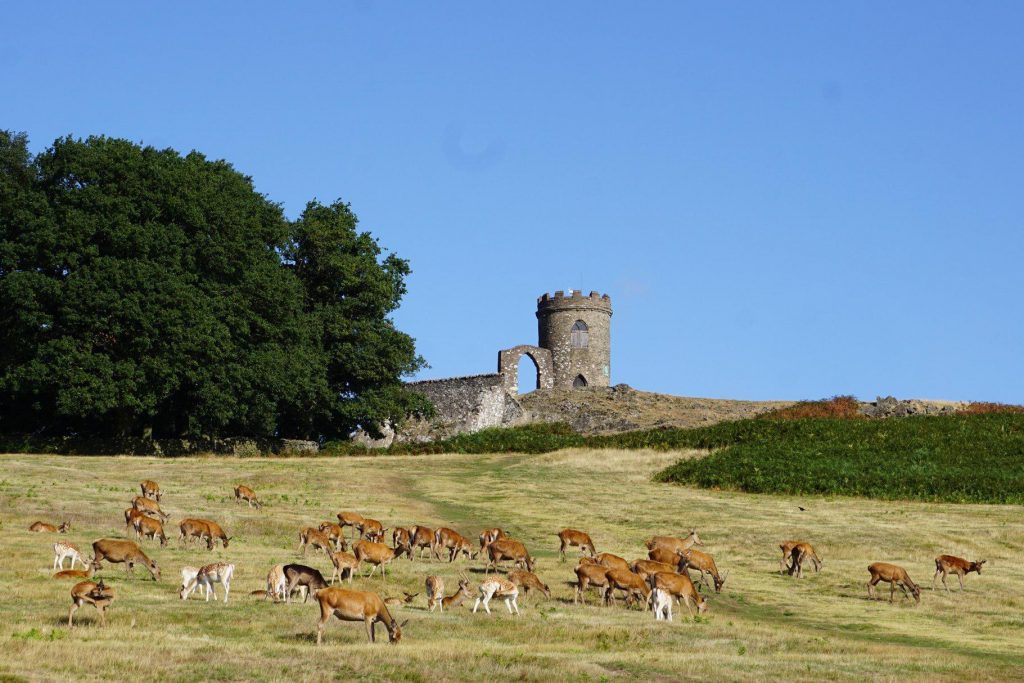If you’ve grown up in Leicestershire, Bradgate Park will have no doubt served as a staple part of your childhood…
Whether it’s fishing for sticklebacks in one of its meandering streams, or riding your bike for the very first time, we all have fond memories of this local beauty spot, including Sir David Attenborough – the great British naturist who grew up in Leicester…
In his youth, Sir David was a frequent visitor to the park – which is home to an array of wildlife and some of the world’s rarest fossils. It’s one of the reasons why the site and neighbouring Swithland Wood have been awarded coveted ‘National Nature Reserve’ status, as part of ongoing celebrations to mark King Charles III’s coronation.

Bradgate Park is a special place for anyone interested in geology as it has perhaps the widest range of rocks, covering the longest time span in a small area of anywhere in England and Wales. Evidence of ancient volcanoes, igneous intrusions, earthquakes and tsunamis can be found together with ancient seas and deserts.
Bradgate Park is also home to super rare fossils from the Precambrian Period, which can only be found at a couple of locations on earth…
“We can’t actually reveal the location of some of the very rarest fossils as they are of international importance. However, there are other areas of fossils and rocks at the park which are also interesting. We often run geology walks where people can find out more,” explained James Dymond, director of the Bradgate Park Trust.
“ It might not be everyone’s cup of tea, but there’s an amazing story there when you actually think about the ground under your feet and the stories it can tell… ”
The rarest fossils at Bradgate, known as the Ediacaran biota, are more than a billion years old and feature early marine life forms, which are among the first evidence of complex life on Earth. They helped revolutionise our understanding of how life evolved, resolving the paradox of Darwin’s ‘missing link’. Darwin had suggested as part of his theory of evolution that the Precambrian seas must have hosted life, but this had never been proved until Precambrian fossils were discovered…
Alongside its prehistoric treasures, Bradgate Park also houses a number of more recent historical attractions – most notably the famous ruins of Bradgate House.
The home of Lady Jane Grey – England’s tragic ‘Nine day Queen, has stood in the park since the 16th century.
Lady Jane is remembered in British history as the monarch with the shortest reign. She was executed aged 17, after being Queen for just nine days.
‘Old John’ is another historic building which stands in Bradgate Park. The curious ‘jug like’ structure has stood on the site’s highest hill since 1784 and serves as its iconic mascot.

Internally, the tower retains a number of 19th century fittings, including timber floors, slate fireplaces, shuttered windows and a castellated roof. A narrow spiral staircase gives access to the upper floor, and is open to visitors on the park’s guided walk programmes.
In 2001, Bradgate Park Trust registered the design of the building as a trademark and in 2018 told a local artist that she would have to pay them if she continued to sell her paintings of it.
“Bradgate’s an incredible place in terms of all those different layers of history – whether it’s 600 million year old geology and fossils or the Tudor ruins which are relatively recent in comparison”, said Mr Dymond.
“ Whatever your area of interest or if you just want to come and enjoy the peace and quiet and the greenery and fresh a”ir, there’s something for everyone.
Alongside its rich history, which spans the ages, Bradgate Park is also known for its wildlife, which includes 550 red and fallow deer.

Oak trees which are up to 800 years old, important grassland habitats and some of the only remaining heath in the area are also notable features.
Bradgate Park’s new National Nature Reserve status also extends to the nearby Swithland Wood reserve, which includes the former Swithland Slate quarries. The site is home to the rare ‘Charnwood Spider’ as well as other important wildlife including Green and Great Spotted Woodpeckers.
“If the park’s new status helps more people to understand the place and the flora and fauna that are there, that would be a really good step forward. Hopefully it will remind people of what a special place it is and encourage them to explore something different next time they visit – maybe even join a walk or a talk,” said Mr Dymond.
“That’s our aim really – to make sure everyone has a great time when they come and visit this unique natural treasure.”
Upcoming events at Bradgate Park can be found at: www.bradgatepark.org/events



